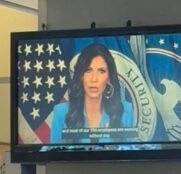The Last Animals, Photojournalist Kate Brooks's Poaching Documentary, Is a Quietly Stunning Call-to-Arms
LatestWhen director and photojournalist Kate Brooks began filming The Last Animals, which premiered last month at the Tribeca Film Festival, there were seven Northern White Rhinos left on the planet. Now there are only three, all living under 24-hour armed protection at the Ol Pejeta Conservancy in Kenya. Sudan, the last male Northern White Rhinoceros, recently appeared on Tinder as the “most eligible bachelor in the world” in a campaign to raise money for reproductive technology research. After unsuccessful attempts at natural breeding, scientists are frantically trying to stave off the species’ extinction using in vitro fertilization.
The Last Animals is an ambitious, agonizing documentary that weaves the plight of the dwindling Northern Whites into the illegal ivory and rhino horn trade and its connection to international trafficking organizations and armed groups like the Lord’s Resistance Army and the SPLA. The film, produced by a team of mostly women, covers the trial of Feisal Mohamed Ali, one of Interpol’s most wanted fugitives, who was eventually sentenced to 20 years on ivory smuggling charges. “The foot soldiers doing this work are cogs in a much bigger machine,” Brooks said. That machine, it’s noted in the documentary, wouldn’t run quite so smoothly without some government assistance.
The scope of the film is wide—we’re spirited across southeast Asia, Africa, the Czech Republic, even a lab in Seattle—but it never veers far from the deeply emotional core of this subject. The camera gazes delightedly as a trio of squeaking baby rhinos toddle curiously over; catches the gleaming sweat running down a park ranger’s face; drinks in the quiet, radiating fury of tireless zoologist Sam Wasser as he stands surrounded by the tusks of a thousand dead elephants. At its world premiere screening, Brooks and the rangers featured in the film received the Disruptive Innovation Award for their work combating illegal wildlife trafficking.
“There were a lot of people who were like, you can’t make a film about elephants and rhinos,” Brooks told Jezebel in a interview last month. “[But] why not? It definitely complicated things, but if you’re in a healthy ecosystem, elephants and rhinos live side by side.”
Healthy ecosystems are tough to find these days. Between 2007 and 2014, the African elephant population declined by 30%, and the African rhino population has declined over 97% since the ‘70s. In South Africa, home to 80 percent (about 20,000) of the world’s remaining rhinos, a court recently overturned a national ban on the domestic sale of rhino horns, a move activists warned would spur an increase in poaching levels. The last wild Northern White Rhino was seen in 2006 in Garamba National Park in the Democratic Republic of the Congo, where much of the film takes place, and the remaining elephants in the park are being annihilated in increasingly militarized and sophisticated attacks along with some of the park rangers fighting to protect them.
In Garamba, “it’s like a war zone—you have days and weeks and months where it’s totally calm, and then all hell breaks loose,” Brooks recalled. “So that’s the fear that rangers have every day.” One of the major characters in the film, the brisk, crinkly-eyed Colonel Jacques Sukamate Lusengo, was killed by poachers along with three rangers in 2015, shortly after the film crew left the park.
-

-

-

-

-

-

-

-

-

-

-

-

-

-

-

-

-

-

-

-

-

-

-

-

-

-

-

-

-

-

-

-

-

-

-

-

-

-

-

-








































